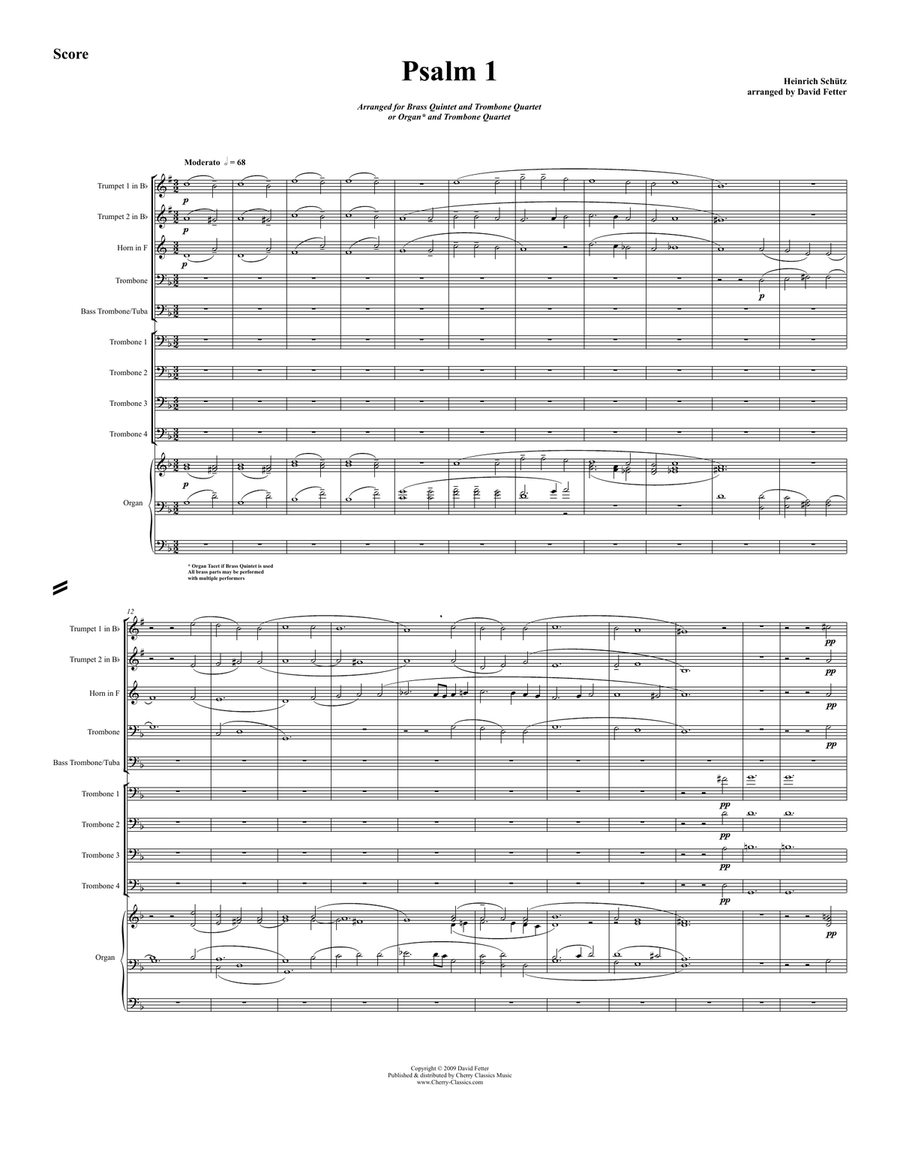Brass Ensemble Trombone - Level 4 - Digital Download SKU: A0.792222 Composed by Heinrich Schutz. Arranged by Fetter, David. Baroque,Classical,Renaissance. Score and parts. 40 pages. Gordon Cherry #4728855. Published by Gordon Cherry (A0.792222). Psalm 1 by Heinrich Schütz (1585-1672), is taken from his collection of choral settings of several of the biblical Psalms of David, in which Schütz continued the polychoral tradition he had absorbed in Venice as a student of Giovanni Gabrieli. Schütz indicated in his preface to the Psalms, published in 1619, that due to limits on performance during the Thirty Years War, alternate instruments or voices could be employed as available. As Psalm 1 was composed for two choirs of voices, it might be an attractive option to double the parts in this version for brass. Also, the choirs might be placed some distance apart. The original version of Psalm I is for two four-part choirs, one of mixed voices and one of tenors and basses. (The original also calls for continuo accompaniment, but, as in similar works of Gabrieli, the choral parts sound complete in themselves.) Composer/arranger David Fetter (b. 1938) is a Trombone faculty member at the Peabody Conservatory of the Johns Hopkins University in Baltimore, Maryland. Also a conductor, his works are performed in concert, at festivals, and in educational settings in the U.S. and Europe and they have been recorded by leading soloists. Mr. Fetter is a former member of the Cleveland Orchestra, the Baltimore Symphony Orchestra, the Radio/Telefis Symphony Orchestra of Ireland, the U.S. Army Band, and other ensembles, where he performed for conductors who included George Szell, Leonard Bernstein, Seiji Ozawa, James Levine, Sergiu Comissiona, and David Zinman. At the Eastman School of Music he was a trombone student of Emory Remington and a member of the Eastman Wind Ensemble under Frederick Fennell. He holds a Masterâs in Musicology from The American University. See www.peabody.jhu.edu/David Fetter.
